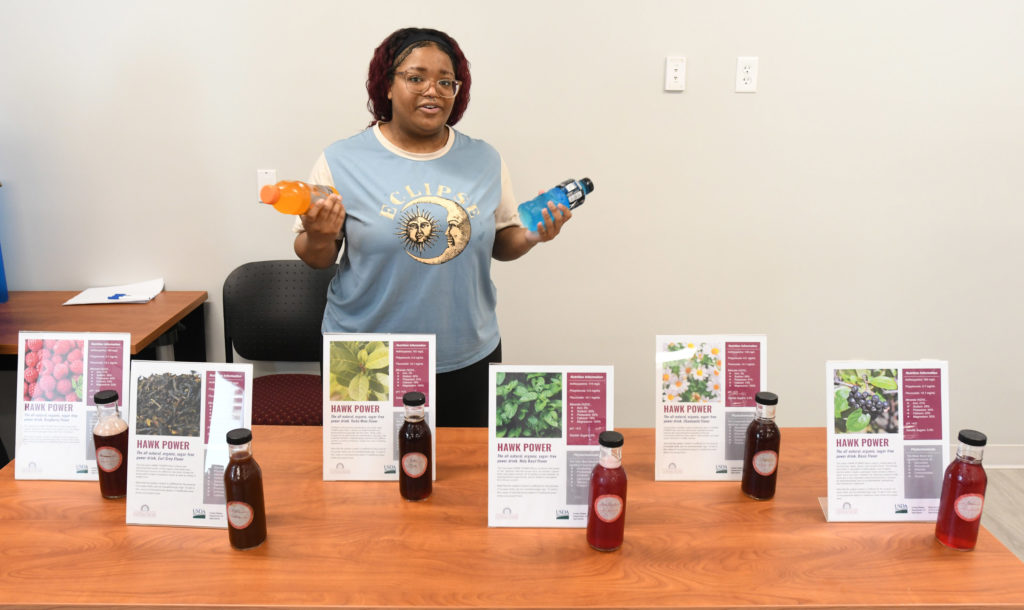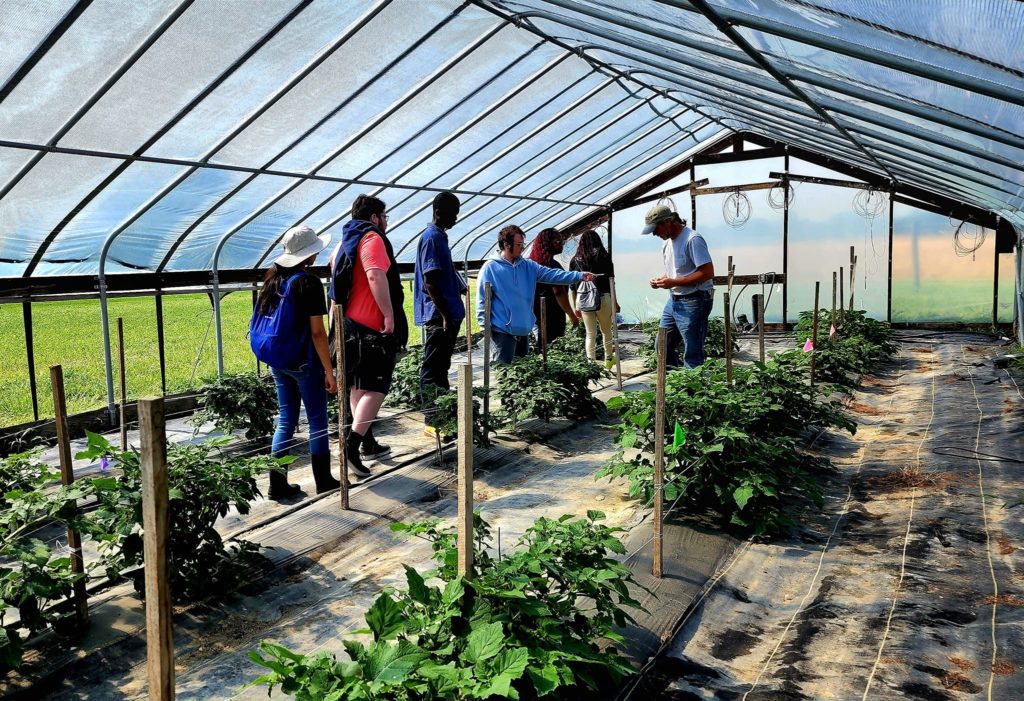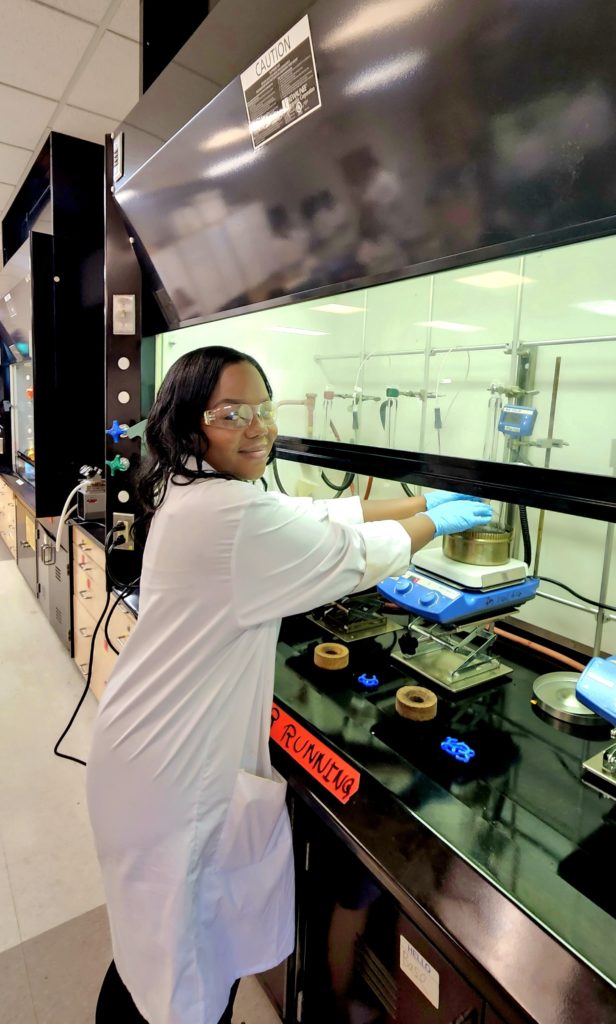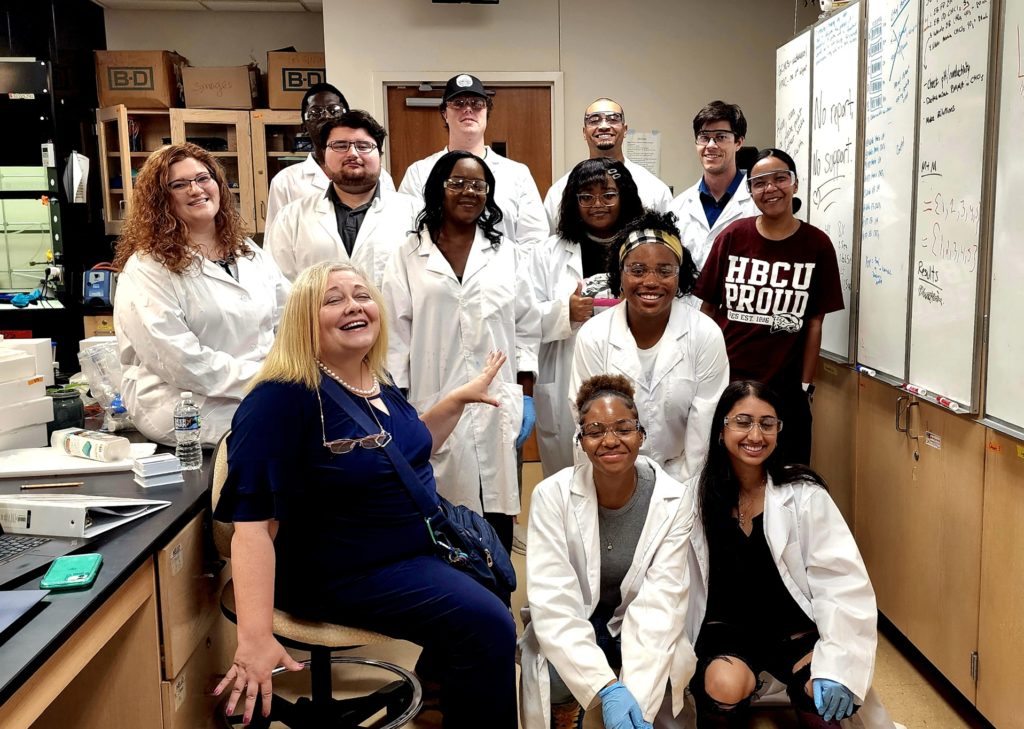
UMES chemistry professor Victoria Volkis’ lab was a whirlwind of activity this summer, playing host to participants from four programs-the Agriculture and Food Research Initiative (AFRI) Education and Workforce Development (EWD) Research and Extension Experiences for Undergraduates (REEU), the Research Experience for Undergraduates (REU) in Marine and Estuarine Sciences, the Dreyfus Foundation and Project SEED.
Supported by a nearly half a million dollar USDA-NIFA grant, the goal of AFRI-EWD-REEU, Volkis said, is to “take students from different STEM majors to address a research project from different points of view. The hope is that they will see how their field of interest can fit into a career with the USDA, subsequently diversifying the future applicant pool for jobs with the federal agency.” Participants for the competitive paid 10-week internship were required to be full-time non-UMES undergraduates.
From their first presentation on June 16 at the Wye Research and Education Center in Queenstown (Md.), where they also did a soil analysis workshop, to their final presentation on August 5 at UMES, the six REEU participants honed their research and presentation skills on two separate projects related to aronia. “Team Power Drink” worked toward perfecting the formula for a patent pending drink, Hawk Power, including collecting taste testing and survey results from stops throughout their summer. “Team Gauge” worked on designing the prototype for a device that could be conveniently carried into the field by farmers to measure peaks in anthocyanins and Brix (sugar content) to determine the exact time to harvest aronia, depending upon the application (pharmaceutical or food-related).
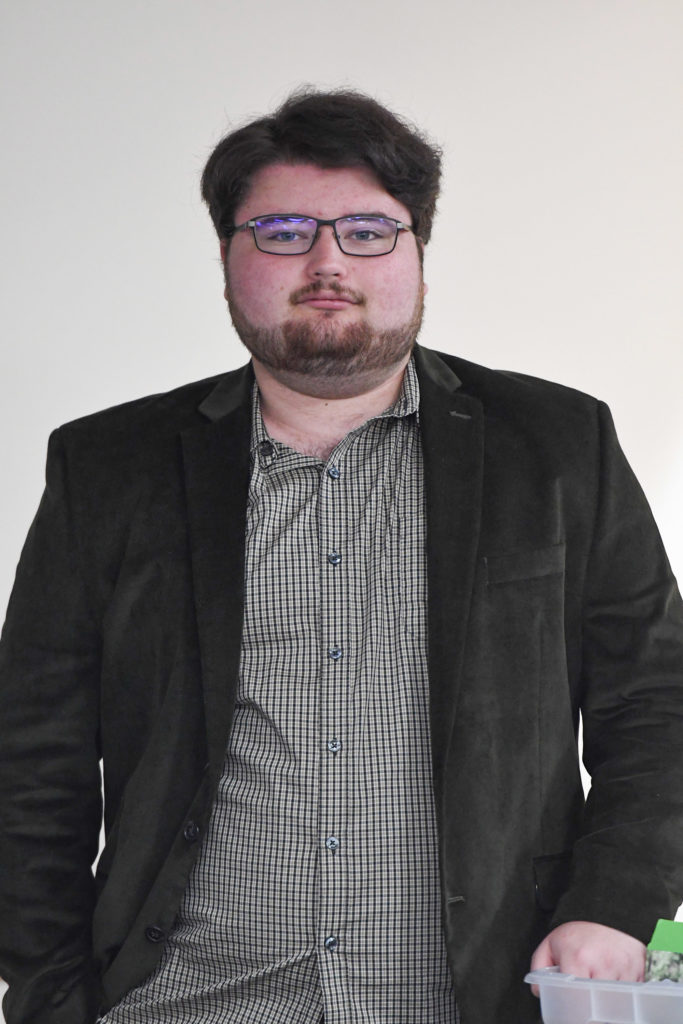
“Of our experiences, the most useful and interesting for me were in the lab,” said Ryan More (pictured at right), a UMES chemistry major and leader for “Team Gauge.” “As someone who has (prior) experience with custom printer parts, I enjoyed creating prototypes- the mastery of which I believe are necessary for my career goals.”
Extension experiences that took place in Maryland included: planting holy basil with UMES Extension Specialty Herb Consultant Henriette den Ouden at the UMES Research, Extension and Teaching Farm; a service-learning experience at a hospital garden while visiting the Western Maryland Research and Education Center; and visits to Mill Run Farm to observe a large-scale aronia operation, a spirulina growing facility in Denton, Habanera Farm in Tyaskin to pick mulberries and for an herbal tea-making activity, and the Department of Natural Resources in Queenstown.

“Expanding my knowledge of marketing, especially as it pertains to the field of food and agriculture” was the highlight for Kanaya Streeter (pictured at left), a junior UMES pre-med major and leader for “Team Power Drink.” “As I finish my degree and prepare for a future career, I can say that I’ve gotten to work alongside multiple skilled and intelligent individuals and have learned more about how my major correlates with the agriculture industry.”

Anijha Baker (pictured at right), a junior from Fort Valley State University (Georgia), worked in Volkis’ lab as an intern in the REU in marine sciences at UMES. Supported by the NOAA Living Marine Resources Cooperative Science Center (LMRCSC) and the National Science Foundation Center-CREST Center for the Integrated Study of Coastal Ecosystem Processes and Dynamics (CISCEP), the program aims to prepare undergraduates (particularly underrepresented minorities) for graduate studies or employment in marine and estuarine sciences.
Baker’s work was part of a million dollar project funded by the U.S. Navy to combat biofilm formation on ships and underwater platforms.
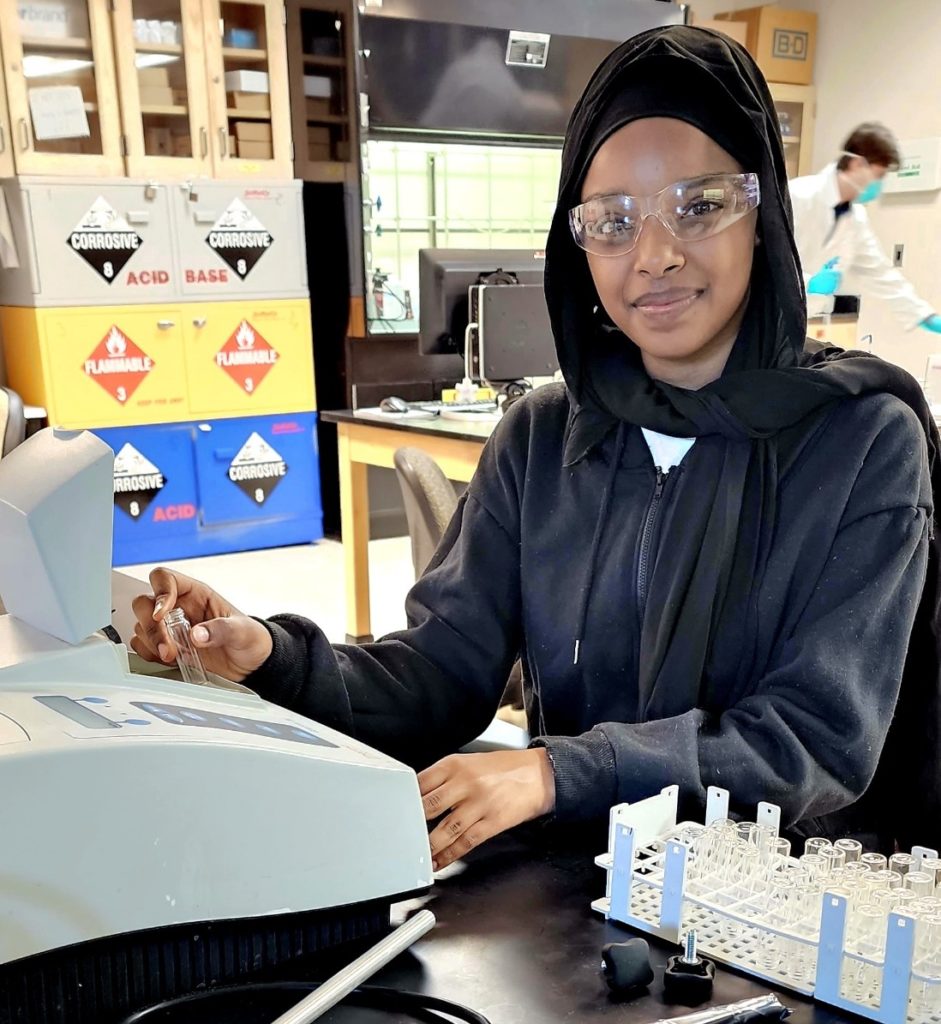
Aseel Albsher (pictured at right) participated in the Project SEED summer program at UMES, helping to conduct a phytichemicak analysis of newly developed Hawk Power drinks. Sponsored by the American Chemical Society, the mission of the program is to “provide sustained STEM research, learning and growth opportunities for high school students with diverse identities and socioeconomic backgrounds so they can be empowered to advance and enrich the chemical science enterprise.”
“This was an extremely fast-paced and intense summer in the lab with, nearly 18 student researchers ranging from high school to the postdoctoral level,” Volkis said. “The results of their contributions were presented at the American Chemical Society’s national meeting and other upcoming conferences. The addition of five MS chemistry students joining the lab this fall should prove for a fruitful and productive academic year.”
Gail Stephens, agricultural communications and media associate, University of Maryland Eastern Shore, School of Agricultural and Natural Sciences, UMES Extension, 410-621-3850, gcstephens@umes.edu.
Photos, top to bottom, left to right are: the AFRI-EWD-REEU interns, one of the “Hawk Power” presentations from an REEU intern, the REEU interns visiting Dr. Andrew Ristvey at the Wye Research and Education Center, students working under Volkis’ U.S. Navy grant, and Raykaela Johnson, a Dreyfus Foundation intern.
Photos by Todd Dudek, Ag Communications, and submitted by Victoria Volkis.


